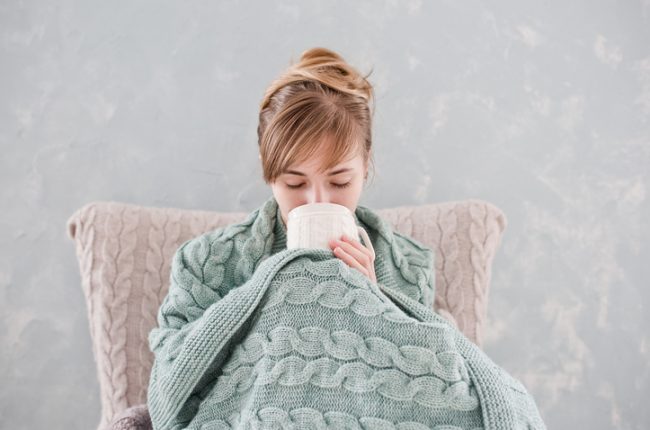Did you know that a person can be allergic to cold? It’s true. Cold urticaria (CU) is a rare autoimmune condition in which a person has a histamine reaction to an abrupt change in temperature. In most cases the cause is unknown and there is no cure. For me, it came on after a serious infection landed me in the hospital for over a week. Luckily, some simple treatments have proven helpful for many people, including myself.
Do you have cold urticaria?
Cold urticaria is very rare, affecting less than one percent of the population, although the incidence can be as high as 30 percent of the population in colder climates. According to the Mayo Clinic, if a person has cold urticaria, their skin will react with redness, itching, burning and/or hives when exposed to colder air or water. Women have a higher incidence of cold urticaria than men and it is most prevalent during the teen and early adult years.
Sometimes, like in my case, it can be a lingering side effect of recent infection, as there has been a link found between infections such as pneumonia and the incidence of cold urticaria. In some cases, cold urticaria is a symptom of an underlying illness. See your doctor right away if you notice symptoms so they can make sure you are healthy in all other respects.
How is cold urticaria treated?
There is a rare form of cold urticaria that can be inherited, and is typically the most severe form resulting in anaphylaxis when triggered, requiring immediate medical attention. Yet, most people suffer mild to moderate skin irritations that resolve with the treatment of either antihistamine medication upon reaction or even as a daily preventative medication.
For me, even the slightest sliver of skin exposed to cold air will cause a reaction, but for many others they are not reactive until the temperature is closer to freezing. Many people find they can prevent the allergic reaction by preparing for the cold weather with layered clothing and covering any skin that may be exposed. It is also advised to avoid cold water such as lakes, rivers and unheated swimming pools.
How is it diagnosed and is there a cure?
Cold urticaria is diagnosed simply with an in-office test, where an ice cube or cold pack is applied directly to the skin for five minutes. If a raised bump or hive appears, that is a sign you likely are experiencing cold urticaria.
Currently there is no cure for cold urticaria, though most sufferers find that it resolves itself within a few years of onset. While it is uncomfortable and, to be honest, frustrating at times to deal with cold urticaria, with a few simple precautions and some simple over the counter treatments it can be controlled and prevented rather well.
Cold Urticaria at a Glance
- Typically affects teens and young adults
- More common in women
- Can be brought on by recent illness or infection
- Usually treated with antihistamines and avoiding cold air or water
- There is no known cure, though it is often outgrown in adulthood

